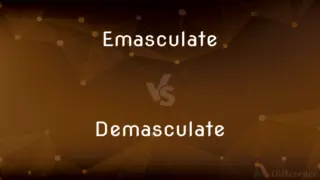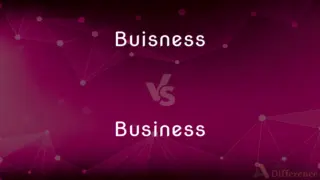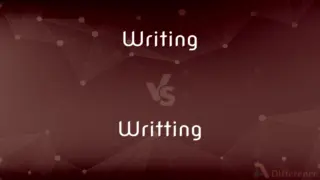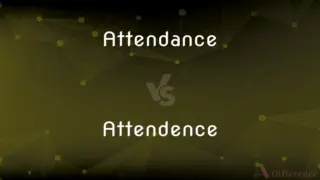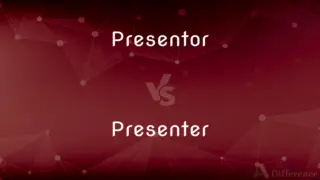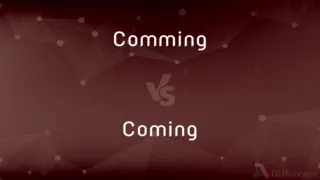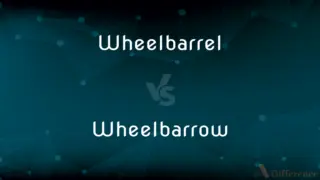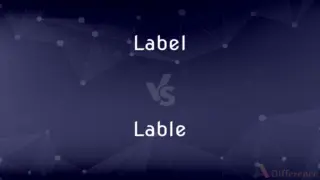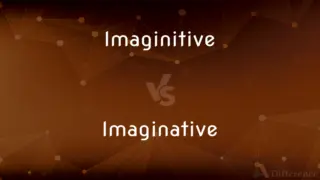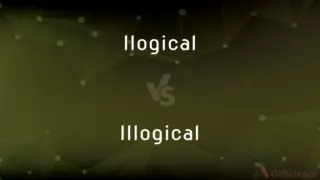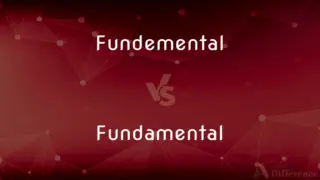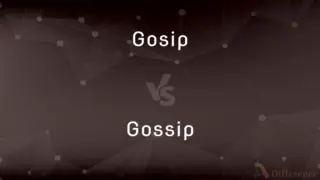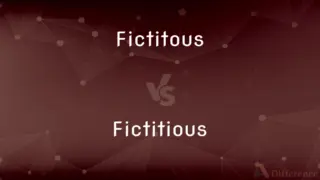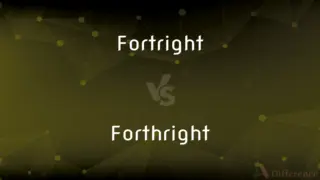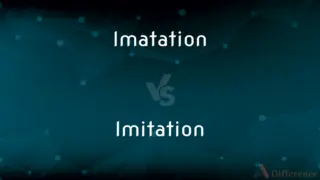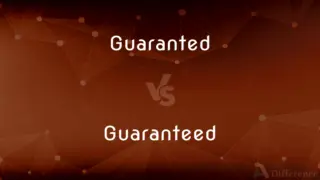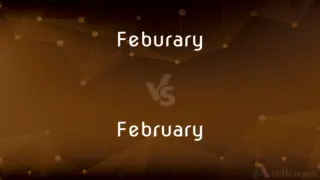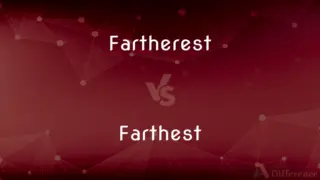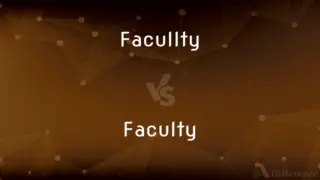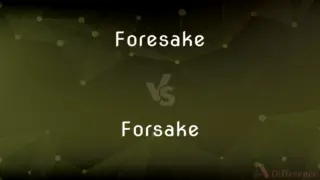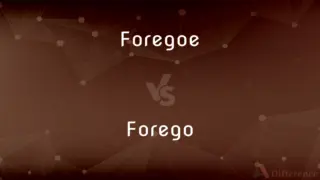Discribe vs. Describe — Which is Correct Spelling?
By Tayyaba Rehman — Updated on March 26, 2024
"Discribe" is a common misspelling. The correct term is "Describe," which means to give an account in words.

Table of Contents
Which is correct: Discribe or Describe
How to spell Describe?

Discribe
Incorrect Spelling

Describe
Correct Spelling
ADVERTISEMENT
Key Differences
Remember the “e” in the middle, similar to other words like "decide" or "delight."
Mentally separate it as "De-scribe" when spelling.
Associate "describe" with "script," both related to writing.
“Dis” typically means apart or away, which doesn’t fit the meaning.
Think of "De-scribe," as if you're scribing or writing about something.
ADVERTISEMENT
How Do You Spell Describe Correctly?
Incorrect: He was asked to discribe the events leading up to the accident.
Correct: He was asked to describe the events leading up to the accident.
Incorrect: The teacher asked us to discribe our dream house in detail.
Correct: The teacher asked us to describe our dream house in detail.
Incorrect: She tried to discribe her feelings, but couldn't find the right words.
Correct: She tried to describe her feelings, but couldn't find the right words.
Incorrect: Can you discribe the person you saw at the scene?
Correct: Can you describe the person you saw at the scene?
Incorrect: The book attempts to discribe the history of the world in one volume.
Correct: The book attempts to describe the history of the world in one volume.
Describe Definitions
To represent or delineate in pictures or graphics.
The artist described the landscape beautifully in his painting.
To state the characteristics of.
Can you describe your lost item to the officer?
To trace the form or outline of.
Trace your hand to describe its shape.
To give an account of in speech or writing
Describe a sea voyage.
To convey an idea or impression of; characterize
She described her childhood as a time of wonder and discovery.
To represent pictorially; depict
Goya's etchings describe the horrors of war in grotesque detail.
To trace the form or outline of
Describe a circle with a compass.
(transitive) To represent in words.
The feeling is difficult to describe, but not unpleasant.
The geographer describes countries and cities.
Several witnesses describe seeing lights in the sky that night.
(transitive) To represent by drawing; to draw a plan of; to delineate; to trace or mark out.
To describe a circle by the compasses;
A torch waved about the head in such a way as to describe a circle
To give rise to a geometrical structure.
The function describes a very complex surface.
To introduce a new taxon to science by explaining its characteristics and particularly how it differs from other taxa.
The fungus was first described by a botanist.
(obsolete) To distribute into parts, groups, or classes; to mark off; to class.
To represent by drawing; to draw a plan of; to delineate; to trace or mark out; as, to describe a circle by the compasses; a torch waved about the head in such a way as to describe a circle.
To represent by words written or spoken; to give an account of; to make known to others by words or signs; as, the geographer describes countries and cities.
To distribute into parts, groups, or classes; to mark off; to class.
Passed through the land, and described it by cities into seven parts in a book.
To use the faculty of describing; to give a description; as, Milton describes with uncommon force and beauty.
Give a description of;
He drew an elaborate plan of attack
To give an account or representation of in words;
Discreet Italian police described it in a manner typically continental
Identify as in botany or biology, for example
Make a mark or lines on a surface;
Draw a line
Trace the outline of a figure in the sand
To give an account or representation of in words.
She described the events in detail.
To convey an impression or emotion by gesture and tone.
His face described his surprise without words.
Describe Meaning in a Sentence
Please describe what you saw last night in as much detail as possible.
Children were asked to describe their favorite animal to the class.
The artist was able to describe his vision for the mural perfectly.
Can you describe the person who helped you?
Scientists describe new species in journals for others to learn about.
She used vivid language to describe the sunset over the mountains.
The job advertisement should clearly describe the skills required.
He struggled to describe the taste of the exotic fruit he tried.
Authors describe characters and settings to bring their stories to life.
Travel blogs describe destinations in a way that makes you want to visit them.
Experts describe this phenomenon as a once-in-a-lifetime event.
Describe the picture in your own words.
Can you describe the difference between the two theories?
Teachers often ask students to describe their feelings using specific adjectives.
The witness was able to describe the suspect's car to the police.
Biographies describe the lives of famous individuals in detail.
She can describe complex concepts in a way that's easy to understand.
Describe Idioms & Phrases
To describe a circle around something
To encompass or include something comprehensively.
The new policy describes a circle around all forms of electronic communication.
Describe in detail
To explain something thoroughly with many specifics.
The detective asked the witness to describe in detail what she had seen.
Common Curiosities
What is the pronunciation of Describe?
It's pronounced as /dɪˈskraɪb/.
What is the singular form of Describe?
"Describe" is a verb and does not have a singular or plural form in the same way nouns do.
Why is it called Describe?
The term "describe" originates from Latin "describere" which means to write down.
Which conjunction is used with Describe?
Any conjunction can be used depending on the sentence structure.
What is the root word of Describe?
The root word is Latin "describere."
Which vowel is used before Describe?
The vowel "a" as in "a description."
Is Describe a negative or positive word?
Neutral.
What is the verb form of Describe?
"Describe" is already in its verb form.
Is Describe a noun or adjective?
Describe is a verb.
Is Describe an adverb?
No.
Is Describe a vowel or consonant?
"Describe" is a word containing both vowels and consonants.
Which preposition is used with Describe?
"As" or "in" can be used, like "describe as" or "describe in terms of."
Is Describe a collective noun?
No.
How many syllables are in Describe?
Two syllables.
How do we divide Describe into syllables?
De-scribe.
What part of speech is Describe?
It's a verb.
What is the plural form of Describe?
Not applicable, as "describe" is a verb.
Is Describe a countable noun?
"Describe" is a verb, so this is not applicable.
Is the Describe term a metaphor?
No, but it can be used in metaphorical expressions.
What is a stressed syllable in Describe?
The second syllable "scribe."
What is the second form of Describe?
Described.
Which article is used with Describe?
Since "describe" is a verb, it doesn't typically precede an article, but its noun form, "description," can use "a" or "the."
Is Describe an abstract noun?
No, but its noun form "description" can be considered abstract.
What is the first form of Describe?
Describe.
What is the third form of Describe?
Described.
How is Describe used in a sentence?
Can you describe what you saw last night?
Is the word Describe imperative?
It can be used in the imperative mood, as in "Describe the scene to me."
What is another term for Describe?
Depict.
What is the opposite of Describe?
Conceal or withhold information.
Which determiner is used with Describe?
Determiners like "this" or "that" can be used before its noun form "description."
Share Your Discovery

Previous Comparison
Referre vs. Referee
Next Comparison
Confrence vs. ConferenceAuthor Spotlight
Written by
Tayyaba RehmanTayyaba Rehman is a distinguished writer, currently serving as a primary contributor to askdifference.com. As a researcher in semantics and etymology, Tayyaba's passion for the complexity of languages and their distinctions has found a perfect home on the platform. Tayyaba delves into the intricacies of language, distinguishing between commonly confused words and phrases, thereby providing clarity for readers worldwide.











